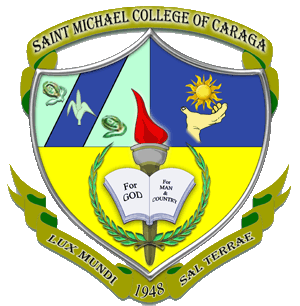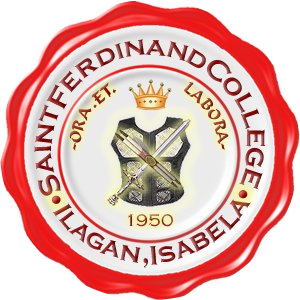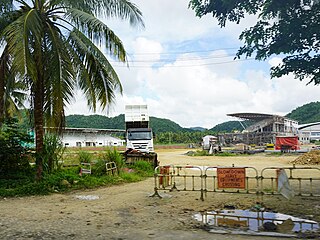
Agusan del Sur State University, formerly known as the Agusan del Sur State College of Agriculture and Technology (ASSCAT), is a chartered state university in Bunawan, Agusan del Sur, Philippines, through Republic Act No. 7932 approved on March 1, 1995, and RA No. 11586.

Dapa, officially the Municipality of Dapa, is a 4th class municipality in the province of Surigao del Norte, Philippines. According to the 2020 census, it has a population of 29,006 people.

Siargao is a tear-drop shaped island in the Philippine Sea situated 196 kilometers southeast of Tacloban. It has a land area of approximately 437 square kilometres (169 sq mi). The east coast is relatively straight with one deep inlet, Port Pilar. The coastline is marked by a succession of reefs, small points and white, sandy beaches. The neighboring islands and islets have similar landforms. Siargao is known as the surfing capital of the Philippines, and was voted the Best Island in Asia in the 2021 Conde Nast Travelers Readers awards.

The University of Caloocan City is a public-type local university established in 1971 and formerly called Caloocan City Community College and Caloocan City Polytechnic College. Its south campus is located at Biglang Awa Street, Grace Park East, 12th Avenue, Caloocan, Metro Manila, Philippines and the north campuses are Camarin Business Campus, Congressional Campus, and Bagong Silang Campus.
The University of Southern Philippines Foundation (USPF) is a private, non-sectarian university in Cebu City, Philippines.

Saint Michael College of Caraga also referred to by its acronym SMCC is a private, Roman Catholic, basic education and higher education institution run by the Roman Catholic Diocese of Butuan in Nasipit, Agusan del Norte in the Philippines. It was established in 1948 by the Missionaries of the Sacred Heart (MSC) fathers. Its main campus is located at Atupan Street, Barangay 4 Poblacion, Nasipit, Agusan del Norte. The second campus is located in Brgy. Triangulo houses the elementary department.
A Bachelor of Science in Information Technology,, is a bachelor's degree awarded for an undergraduate program in information technology. The degree is normally required in order to work in the information technology industry.

Colegio de Montalban is a government-funded university in Kasiglahan Village, Rodriguez, Rizal, Philippines. It was established on September 25, 2003 by virtue of Municipal Ordinance No. 03-24, and approved by the Sangguniang Bayan ng Rodriguez to provide vocational-technical and higher education to help alleviate poverty.
Surigao del Norte State University (SNSU), formerly the Surigao State College of Technology, is a public university in the Philippines. It is mandated to provide advance education, higher technological, professional instruction and training in the fields of agriculture and environment studies, fishery, engineering, forestry, industrial technology, education, law, medicine and other health-related programs, information technology, arts and sciences, and other related courses. It is also mandated to undertake research and extension services, and provide progressive leadership in its areas of specialization. Its main campus is located in Surigao City.

Davao del Norte State College is a public college in New Visayas, Panabo, Philippines, that provides instruction and progressive leadership in education, engineering, arts, sciences, fisheries, and other fields.
The Angeles University Foundation also referred to by its acronym AUF, is a private Roman Catholic non-stock, non-profit educational institution run by lay persons in Angeles City. It was established on May 25, 1962, by Agustin P. Angeles, Barbara Yap-Angeles, and their family.
The Olivarez College, also known as simply Olivarez or OC, is a private, nonsectarian college along Dr. A. Santos Avenue, Parañaque, Philippines that offers academic programs in basic education, junior and high school, undergraduate, graduate and technical education levels. Founded in 1976, Olivarez College is the only school in Parañaque City that is accredited by the Philippine Accrediting Association of Schools, Colleges and Universities (PAASCU) and the Philippine Association of Colleges and Universities - Commission on Accreditation (PACUCOA). It is a member of the Universities and Colleges Athletic Association (UCAA) and National Capital Region Athletic Association (NCRAA).
Saint Louis College of San Fernando, also referred to by its acronym SLC, is a private Catholic coeducational basic and higher education institution run by the Congregation of the Immaculate Heart of Mary in the City of San Fernando, La Union, Philippines. It was founded in 1964 by the CICM missionaries.
The college was established in 1948 as Abra Valley Junior College and was later renamed to Abra Valley College. In 1994, its name was again changed to Abra Valley Colleges. It is an academic institution located in Bangued, Abra, Philippines, which offers courses in nursing, criminology, hospitality and restaurant management, law, engineering, information technology.

Saint Ferdinand College is a private, Catholic coeducational basic and higher education institution in Ilagan City, Isabela, Philippines. It was established in 1950 by the Knights of Columbus Ilagan Council 3705. Its formal operation began in school year 1951–1952, with classes offering from Kindergarten to College Level.
The Saint Paul University Surigao, also referred to as SPUS or SPU Surigao, is a private, Catholic basic and higher education institution run by the Sisters of Saint Paul of Chartres in Surigao City, Surigao del Norte, Philippines.
Saint Paul College of Ilocos Sur, also referred to by its acronym SPCIS or SPC Ilocos Sur, is a private Catholic basic and higher education institution run by the Sisters of Saint Paul of Chartres in Bayubay, San Vicente, Ilocos Sur. It is the second oldest private school in Ilocos Sur, Philippines and is a member school of the Saint Paul University System. It was founded by the Sisters of Saint Paul in 1905, thus the second oldest school in the Saint Paul University System.
Francisco T. Matugas, also known as Lalo Matugas, is a Filipino politician from the first district of the province of Surigao del Norte, Philippines. He served as Governor of the province from 2019 to 2022. He was first elected as Governor in 1992, and served for 9 years. He also previously served as the congressman of the province's first district.

The Siargao Island Sports and Tourism Complex (SISTC) is a sports complex in Dapa, Surigao del Norte, Philippines.

Surigao del Norte's 1st congressional district is one of the two congressional districts of the Philippines in the province of Surigao del Norte. It has been represented in the House of Representatives since 1987. The district encompasses the island chains off the northeast coast of mainland Surigao del Norte. Since the 2007 redistricting following the separation of Dinagat Islands, the district now comprises the Siargao and Bucas Grande municipalities of Burgos, Dapa, Del Carmen, General Luna, Pilar, San Benito, San Isidro, Santa Monica and Socorro. It also included Dinagat Islands until it was established as a distinct province in 2006. It is currently represented in the 19th Congress by Francisco Jose Matugas II of the Lakas-CMD.









